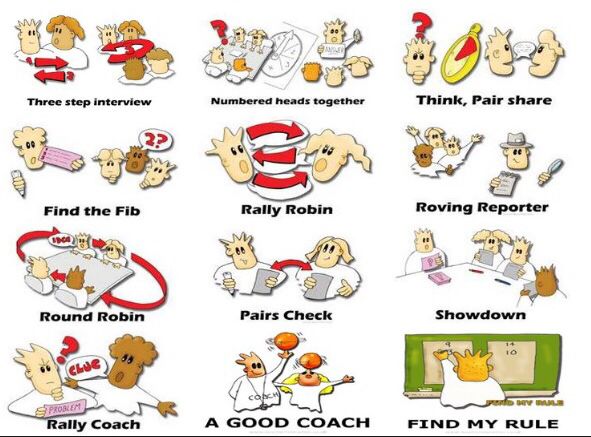(Click each title to read the article)
Dr. Kagan believes that given the right situations and opportunities within the classroom, students will have more time cooperating together and increasing achievement. This article introduces two situations with the same goal in mind. The first situation is shown without the use of a Kagan structure and the second situation describes how using minimal adjustments and incorporating Kagan structures, the desired behaviors and outcomes will become more apparent. Next the article discusses how traditional hand raising with questions and answers actually increases the achievement gap, as well as “worksheets” when not covered appropriately. For group work, we should be sure to designate specific tasks and objectives for the group to accomplish. This limits the amount of “mind wandering” or “hiding” that students may resort to. At the end of the article, he lists a variety of strategies that you can use to decrease that negative behavior and increase the involvement of students.
He discusses the shift from 20th century learning and 21st century learning. Twentieth century curriculum focused on 4 main subjects; Math, English, Science, History. Today, we consider these our “Core” subjects for students. However, in the 20th century, teaching/education consisted of direct instruction, note taking, quiet seat work, whole-class Q/A, and worksheets. There was very limited engagement between other students and almost no type of differentiated instruction. As the 21st century approached, the world brought many changes such as a growing industrial and technological industry, the change in family dynamics, and the rating of America in comparison to other countries. The focus for the 21st century learner now consists of; Cooperative learning, Multiple Intelligence, Learning Styles, Differentiated Instruction, and College/Career Skills. The chart below describes strategies that have curriculum for the 21st century learner embedded within.
This article discusses interpreting content through the use of gestures, body movements, and hand symbols. This strategy is exceptionally beneficial for English language learners, as well as using it for increasing vocabulary development in all students. There are a variety of teacher examples for all subjects. One teacher used it for punctuation marks, another for the parts of the cell. I used it while teaching my students vocabulary words for The Tempest. Each time we came across a vocabulary word, students would perform the gesture I, we, or they, created. It is a great way to get students involved by having them create the gestures and perform them from the class. Research is provided to demonstrate that the use of gestures accelerates learning as well as retention and transfer.



No comments:
Post a Comment